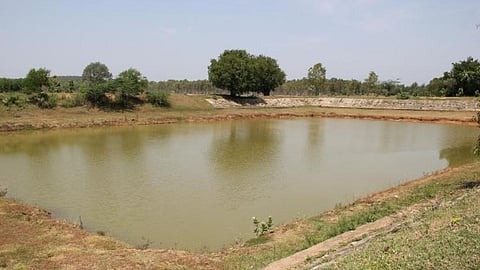
- Topics
- Feature
- Opportunities & Events
- About
- Hindi Portal
- Data
- Topics
- Feature
- Opportunities & Events
- About
- Hindi Portal
- Data

Climate change is leading to rise in extreme events world over, and developing countries such as India have been experiencing not only higher death rates but also greater economic impacts due to natural hazards.
Urban areas in India have been found to be particularly vulnerable to floods due to unplanned developmental activities, change in land use patterns, overcrowding as well as increase in natural hazards such as rise in sea levels, storms and cyclones.
This paper 'Investigation of role of retention storage in tanks (small water bodies) on future urban flooding: A case study of Chennai city, India' published in the journal Water informs that coastal areas of Chennai city located in the Adyar basin suffer from frequent flooding during monsoon, due to heavy rainfall and the low-lying terrain. Poorly maintained storm drains, encroachment of natural drainage systems such as rivers and canals and formation of sand bars at the river mouth further worsen the situation.
The upper part of the Adyar basin consists of large stretches of agricultural land and around 163 traditional tanks - storage structures made by damming streams flowing down the inland valleys using crescent-shaped earthen bunds. They were a part of the local landscape for hundreds of years and were mostly used for irrigation.
The rivers in Tamil Nadu are all fed by the monsoons and have to cross state boundaries before they irrigate the fields downstream. The tanks catch this water flowing in the rivers and fill themselves to the brim before it reaches the sea. A series of cascading tanks have been constructed and the outflow from one tank serves as the inflow for the next one in the series since the tanks have been designed to allow the excess water to flow out only after they reach their capacity.
The tanks vary greatly in size from small ponds to large ones like lakes and reservoirs that are regularly maintained and play an important role in controlling runoff in the basin. A tank that receives water from an upstream catchment cycles the stored water through evapotranspiration, seepage over land, and lateral outflow. Tanks store water for long periods in the upstream catchments of the city and can significantly affect the hydrology of the region and are greatly affected by changes in land use and climate.
Many of these tanks are disappearing at a fast rate due to encroachment while many are losing their storage capacity due to heavy siltation. The customary practice in Tamil Nadu, known as “Kudimaramathu” where communities often maintained their tanks by cleaning and desilting them prior to the monsoons, has disappeared over the years.
The Tamil Nadu government has recently started the revival of this practice by removing weeds and deepening of the tanks to deal with the problem of floods and ensure enough supply of water for irrigation.
However, very little is known on the role of tanks in flood moderation and the effect of dredging/deepening of tanks in the upstream catchments on the flood characteristics in downstream Chennai Metropolitan Area (CMA).
The paper presents the findings of a study that analyses the role of tanks in flood control and the effectiveness of tank dredging/deepening in reducing the impact of floods in CMA. The study uses urbanisation-hydrologic-hydraulic modelling framework under various rainfall scenarios to assess the impact of maintaining and dredging/deepening tanks on control of floods in CMA.
The study finds that:
The paper argues that observations of this study can be useful to the government for the proposed plan of dredging of tanks in the Adyar basin. While dredging is an expensive process, very few options exist.
Urgent efforts at preserving the storage and functionality of the existing tanks is crucial so as to minimise damage caused due to moderate fluvial floods (1 in 50-year rainfall-like events) in the rapidly urbanising Adyar basin.
The paper can be accessed here